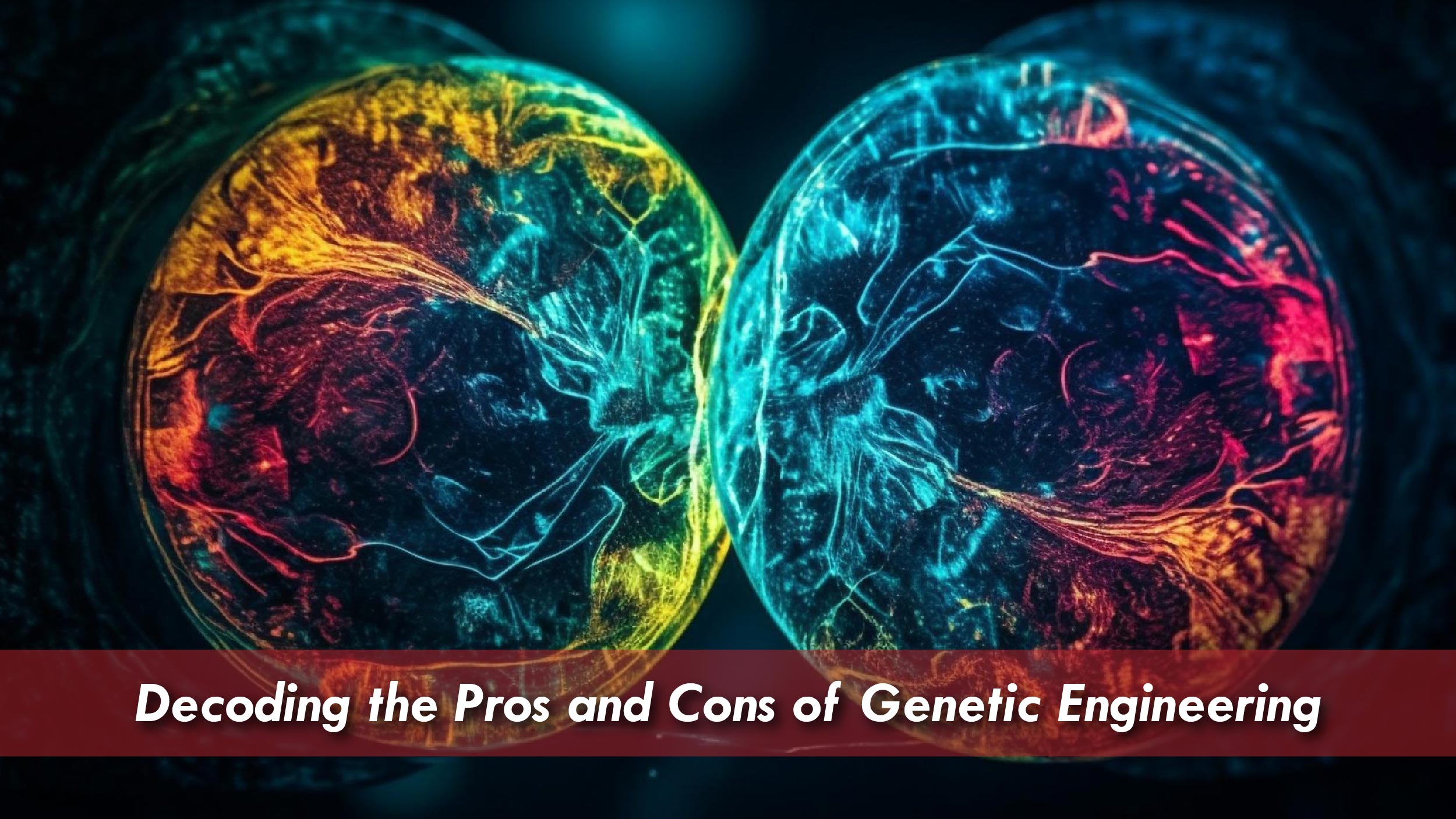If there’s one thing that has always fascinated the human mind, it is genetic engineering. Since the advent of this tangible possibility, scientists and researchers have explored multiple ways to enhance the current plant and animal life or to create entirely new species within laboratory settings potentially. Without further ado, let’s get started.
What is Genetic Engineering?
Genetic engineering (GE), also known as genetic modification, is a laboratory-based process that employs technologies to modify the DNA composition of an organism. This can entail altering a single base pair (A-T or C-G), removing a DNA region, or introducing a new segment of DNA. For instance, genetic engineering might involve inserting a gene from one species into an organism from another species to achieve a desired trait. Widely utilized in both research and industry, this approach has found applications in producing cancer therapies, brewing yeasts, genetically modified plants and livestock, and various other fields.
Example of Genetic Engineering
Here are a few examples of this innovative approach:
- Bioluminescent Animals: Scientists have employed GE to create animals, including mice and rabbits, that emit a glow in the dark due to fluorescent proteins. This innovative technique aids researchers in studying diverse biological processes.
- Eco-Friendly Swine (Enviropig): The Enviropig, a genetically modified pig, has been designed to reduce phosphorus in its waste, aiming to mitigate the environmental impact of pig farming and decrease water pollution caused by excessive phosphorus.
- Plant-Based Pollution Remedy: Through GE, plants have been developed to play a role in environmental cleanup. For instance, scientists have engineered plants capable of absorbing heavy metals from polluted soil, contributing to the remediation of contaminated areas.
- Toxin-Producing Cabbage: Cabbage plants have undergone genetic modification to produce a toxin present in scorpion venom. This alteration enhances plant resistance to pests, diminishing the reliance on chemical pesticides.
- Silk-Producing Goats: Researchers have altered the genetic makeup of goats, enabling them to produce proteins found in spider silk within their milk. Renowned for its strength and elasticity, spider silk holds promise in diverse industries, including textiles and medicine, prompting exploration of its potential applications.
Ethical Considerations
The ethical dimensions of animal genetic engineering provoke diverse perspectives influenced by individuals’ overarching worldviews. Advocates see GE as a logical extension of selective breeding practices, emphasizing its potential benefits. Conversely, skeptics raise concerns about associated risks and moral implications. The ethical discourse is intricate, encompassing considerations of animal welfare, human health, and the overall potential advantages and drawbacks linked to genetic modifications.
Decoding the Pros and Cons of Genetic Engineering
Pros of Genetic Engineering:
- Disease Prevention: Genetic engineering enables the development of organisms with enhanced resistance to diseases, offering potential breakthroughs in preventing and treating various illnesses.
- Agricultural Advancements: GE in crops can lead to increased yields, improved nutritional content, and resistance to pests, contributing to global food security.
- Medical Applications: The field of medicine benefits from GE through the production of pharmaceuticals, personalized medicine, and gene therapies for treating genetic disorders.
- Environmental Conservation: Genetic modification can be employed to create organisms with enhanced environmental resilience, potentially aiding in conservation efforts and mitigating the impacts of climate change.
- Research and Innovation: Genetic engineering facilitates scientific research, allowing scientists to study gene functions and better understand biological processes, leading to innovations in various fields.
Cons of Genetic Engineering:
- Ethical Concerns: GE raises ethical questions related to manipulating life, including concerns about playing “nature’s role” and the potential for unintended consequences.
- Environmental Risks: The release of genetically modified organisms into the environment may have unpredictable ecological impacts, disrupting natural ecosystems.
- Health Risks: The long-term health effects of genetically modified organisms on both humans and animals are not fully understood, raising concerns about unintended health consequences.
- Economic Inequality: Access to GE technologies may exacerbate economic disparities, with potential benefits primarily reaching those who can afford advanced medical treatments or genetically modified crops.
- Loss of Biodiversity: The widespread adoption of genetically modified crops could lead to a reduction in biodiversity, as a focus on a few genetically modified varieties may replace diverse, traditional crop varieties.
Balancing the potential benefits with ethical considerations and potential risks remains a critical aspect of discussions surrounding the application of GE in various fields.
In a Nutshell
Genetic engineering is a powerful and complex field that offers both potential benefits and ethical concerns. It has the potential to revolutionize various industries, including agriculture, medicine, and environmental conservation. Through GE, scientists can create crops with increased yields, enhanced nutritional content, and improved resistance to pests and diseases. In the medical field, it holds promise for developing new treatments and therapies for genetic disorders and diseases. However, the ethical considerations surrounding GE, such as the potential impact on the environment, the concentration of power, and the manipulation of living organisms, cannot be ignored. Any advancements in GE must be made with careful consideration of the potential risks and consequences. Striking a balance between scientific progress, ethical responsibility, and public acceptance is essential for the responsible development and application of GE technologies.




